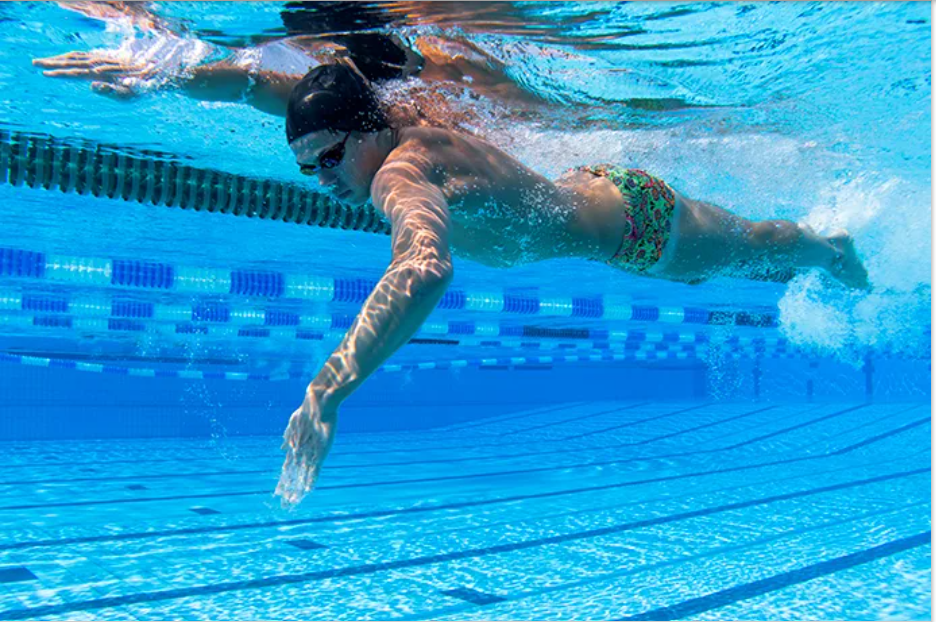Wetsuits vs. Speedsuits in Triathlon: Understanding the Differences and Choosing the Right Gear
In the sport of triathlon, efficiency and comfort can make a significant difference in performance. One key factor that impacts swim performance is what you wear in the water. Triathletes commonly choose between wetsuits and speedsuits, depending on race conditions, water temperature, and race specific rules. Though they may appear similar to the untrained eye, these two types of suits serve very different purposes and offer unique advantages.
What Is a Wetsuit?
Wetsuits are made from neoprene, a synthetic rubber that provides thermal insulation, buoyancy, and hydrodynamic efficiency. They are designed to keep the athlete warm in cold water while helping them float and keep their hips up, which reduces drag and improves swimming posture.
In triathlon, wetsuits are typically permitted when water temperatures are below 78°F for age groupers, though this limit can vary slightly based on the governing body (e.g., Ironman or USA Triathlon). Wetsuits come in various styles, such as full-sleeve or sleeveless, and vary in neoprene thickness—thicker areas generally provide more buoyancy and insulation.
Benefits of wetsuits:
Buoyancy: Helps keep the swimmer's body higher in the water, promoting a streamlined position and reducing effort.
Warmth: Essential for races in cold open water.
Speed: The combination of buoyancy and hydrodynamic materials often results in faster swim times.
Energy efficiency: Swimmers expend less energy staying afloat and moving through the water.
However, wetsuits can also restrict shoulder mobility, especially if not fitted properly. Additionally, putting them on and taking them off can be time-consuming if the suit isn’t designed for quick transitions.
What Is a Speedsuit?
A speedsuit, also called a swimskin, is made from lightweight, water-repellent, and compressive fabric. Unlike wetsuits, speedsuits do not offer buoyancy or thermal insulation. They are used in non-wetsuit legal races, typically when water temperatures exceed the allowable limit for wetsuit use.
Speedsuits are worn over a tri suit and removed after the swim portion. They are engineered to reduce drag by smoothing out the surface of the tri suit underneath and compressing the body, which helps minimize resistance in the water.
Benefits of speedsuits:
Drag reduction: The sleek, compressive fabric cuts through the water better than a standard tri suit and will generally have more of a water repellant material than your normal tri suit.
Easy removal: Designed for fast removal during T1 (transition from swim to bike).
Legal in warm-water races: When wetsuits are not allowed, speedsuits are the next best performance-enhancing option.
Unlike wetsuits, speedsuits offer no warmth or buoyancy, so swimmers need strong technique and conditioning to maximize performance.
Choosing the Right Suit for Race Day
The primary factor in choosing between a wetsuit and a speedsuit is water temperature, followed by race regulations and personal preference. If the race allows wetsuits due to cooler water temperatures, most athletes will opt for one because of the buoyancy and energy savings. However, if the water is too warm for wetsuits, a speedsuit is a legal and beneficial alternative.
Key considerations:
Check the race rules: Always verify the temperature cutoffs and legal gear ahead of race day.
Fit is critical: Whether wetsuit or speedsuit, a snug but comfortable fit is essential for performance and to prevent water intrusion.
Practice in your gear: Familiarize yourself with swimming and transitioning in the suit you plan to race in.
Conclusion
Both wetsuits and speedsuits play important roles in triathlon swim performance. A wetsuit offers warmth, buoyancy, and speed—ideal for colder races. A speedsuit, while less buoyant, provides hydrodynamic advantages in warm-water events where wetsuits are not allowed. By understanding the strengths and limitations of each, and by aligning your gear choice with race conditions and rules, you can make a confident decision that supports your best performance on race day.
Coach Michael Rourke is a Level 3 Playtri Coach and an American Swim Coaches Association Level 5 swim coach. He coaches junior and adult triathletes of all levels, as well as high school elite swimmers. He is also a 70.3 World’s Qualifier and USAT Age Group Nationals Qualifier. You can contact him at michael.rourke@playtri.com or look into individual coaching at https://www.playtri.com/individual




